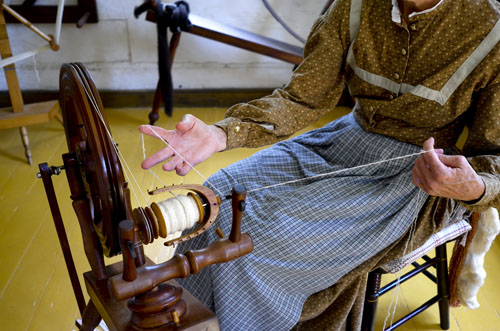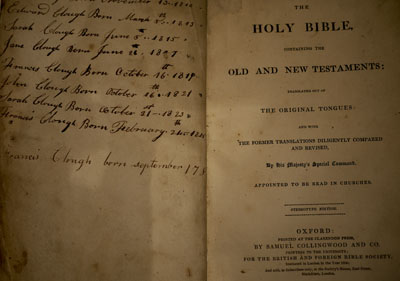17. Occupations – Many genealogists will record the occupations of their ancestors more out of curiosity than as a possible source of research. However, occupations often run in families. A single family can produce several generations of butchers or bakers or candlestick makers.
Traditionally, occupations were passed on to the eldest son, although other family members would also often get involved. Thus, when tracing ancestors, consider taking a closer look at their occupations. It can give valuable clues as to where they went and what they did when they arrived at their destination.

Every village needed a blacksmith and a butcher, but certain trades such as textiles and forestry tended to congregate in certain towns and regions. Think about the occupation of your ancestor and what this might have meant as to where they may have travelled to find work.
18. Family Letters – Old family letters sitting in the dusty corner of some attic can be an extremely valuable source of information for genealogists. Names, dates, places and important activities are the cornerstone of most family correspondence. However, a surprising number of people overlook the simple act of sitting down and reading a pile of old letters. Often old letters can appear indecipherable because of poor handwriting or because the letter is written in an unknown language. However, it is usually worth investing the time and effort to either figure out the handwriting or to get someone to translate the letters for you. (see How to Read Old Handwriting)
If translation is required, the entire letter does not necessarily need to be translated. Even in a foreign language, it is possible to spot names, dates and numbers. You can focus your translation efforts around these key sentences. If you want to save a bit of money, there are many free online translation tools to help you, including Babelfish and Google Translate. This same logic applies, incidentally, to old journals and diaries.
19. Family Bibles - Family bibles can be a great source of genealogy information. Our ancestors often wrote the names and date of birth of family members on the inside blank pages. However, people sometimes dismiss family bibles because they don't recognize the last names written in it. They think it must be another family's bible. This is where this genealogy tip comes into play.
Family bibles are particularly helpful in tracking down the female lineage of a family. This is because bibles were a family heirloom that was almost always passed down to the oldest daughter in a family.
This means that every generation written in the bible will have a different last name (assuming the woman marries and takes on her husband's name). So, if you have a family bible in your possession, what you are probably looking at are one or more generations of ancestors on your mother, grandmother, g grandmother, gg grandmother's side, etc.
Time to perhaps take another look at that family bible.


